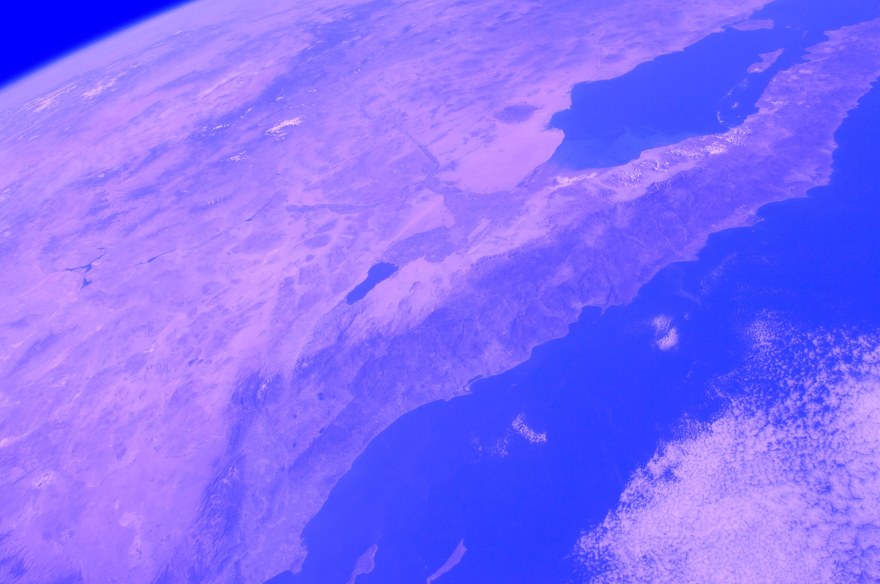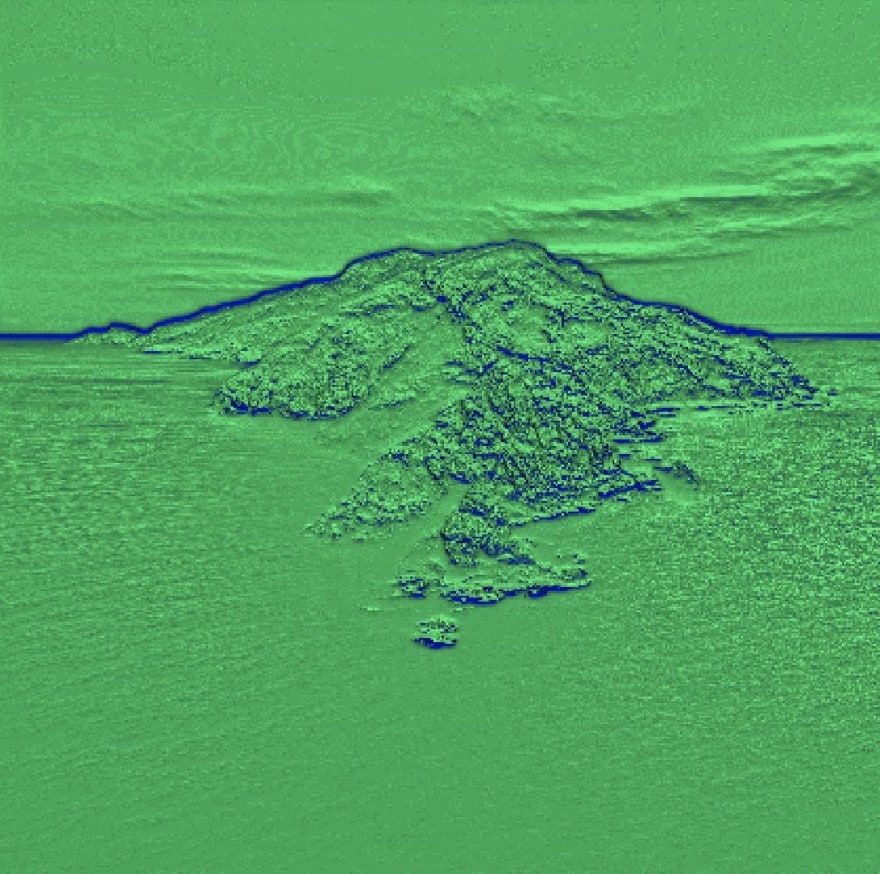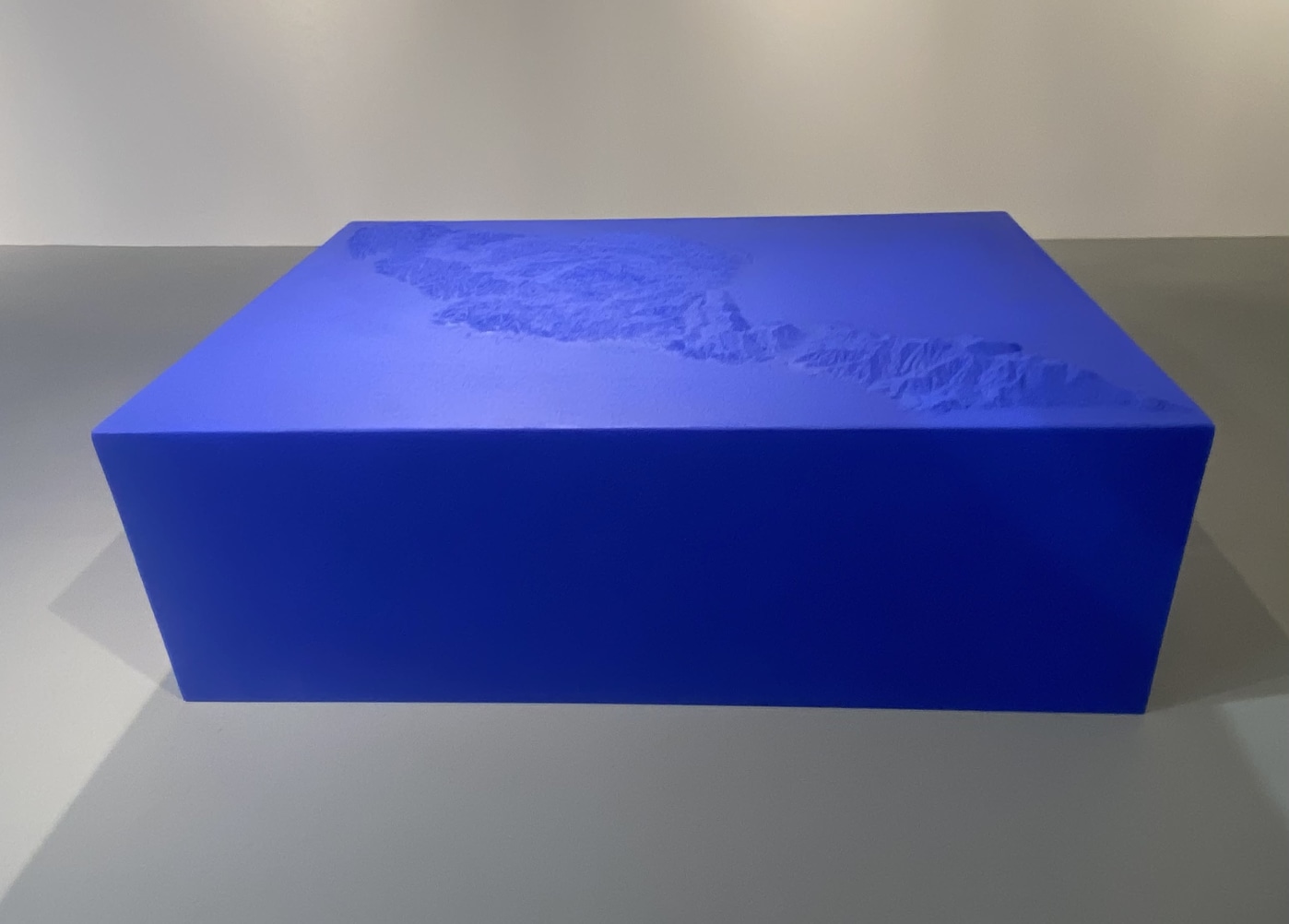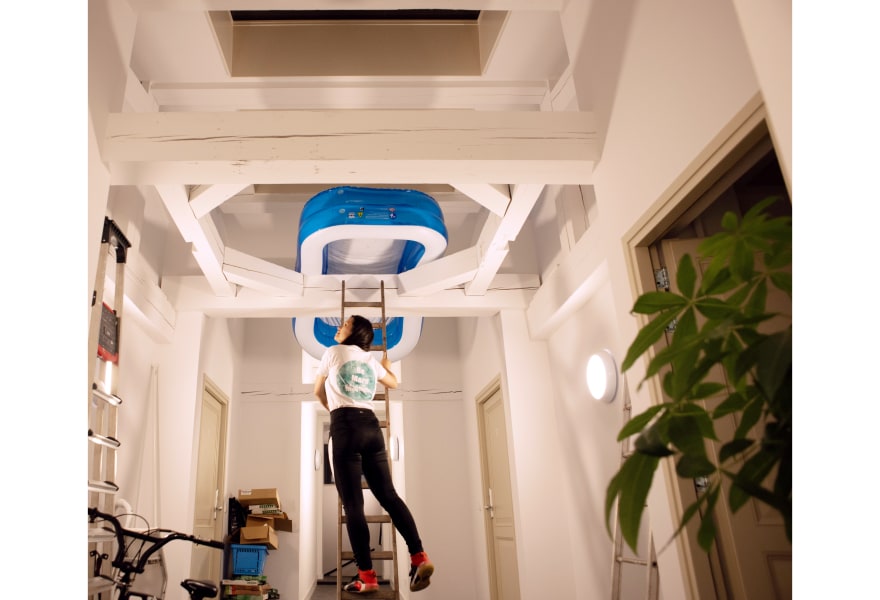18 september 2023, Wouter van den Eijkel
The studio of... Simone Hoàng
Simone Hoàng’s studio is located in the Haarlemmerpoort, the 19th-century city gate near Amsterdam's Westerpark. As a conceptual artist, she makes few demands of a studio space, but it must stimulate thought. “If I also consider my psyche a space, it should not become routine. When I get good at something, I want to start from scratch again.”
In conjunction with her gallery exhibition, Galerie Fontana is showing Hoàng's latest project, Movie Star, at Unseen. Central to Hoàng's work is her questioning of our conditioning and conventions. For Movie Star, she combined two types of backgrounds, the blue and green screen that is used for post-production in film shoots and the well-known wallpaper from Apple computers, Catalina Island. What would happen if you were suddenly able to walk around your screensaver?

Simone Hoàng, Scenario VIII, 2023, Galerie Fontana
Your studio is in a unique location, the Haarlemmerpoort, a 19th-century city gate. It is historic, which does not necessarily equal comfort. Is it a practical space?
It is definitely unique. I prefer spaces that initially had a different purpose. For me, a space doesn't have to be practical. In a city gate, you have to reinvent yourself over and over again. The historic elements themselves influence your creative process. This keeps me sharp. By the way, as far as comfort is concerned, the Poort is equipped with solar panels and air source heat pumps!
Is the location of your studio (in the centre of town, ed.) important to you or is that a minor detail?
Not geographically. In that sense, the location is not important to me. The place itself should stimulate thought. The space should raise questions, as is the case with the Haarlemmerpoort, such as why it was originally built.

Simone Hoàng, Scenario III, 2023, Galerie Fontana
What makes a good a studio space for you?
Since my work is conceptual, I can work anywhere in principle. And I do, too. I deliberately did not have a permanent studio for a very long time. This idea weighs heavily on my creative process. I have few demands of a physical space, but if I consider my psyche as a space, that place should not become routine. When I get good at something, I want to start from scratch again.

Simone Hoàng, Scenario I, 2023, Galerie Fontana
I understand that you are opening your studio to VIPs during Unseen. What will you be showing them?
That's right. I will be starting a new process on the spot, which will be shown on the last day of Unseen (Sunday 24 September).
New work of yours is currently on display at Galerie Fontana, in which a leading role is played by an island that most people would be unable to point out on the map, but recognise as the wallpaper on their Apple computer: Catalina Island. Why did you choose this island as your subject?
My latest work can be seen in Galerie Fontana and on Unseen. In it I pose the following question: can something that usually functions as a background form its own entity? Questioning conditioning and conventions is central to my work. During the creation process, I often do this by analysing contradictions. What is behind the foreground is the so-called ‘wallpaper’ that serves as a screensaver on various electronic devices and is intended to prevent images from burning into the screen. This island turned out to be the most-used screensaver worldwide. What happens when you combine two backgrounds into a pedestal? Is it possible to walk around your own screensaver and what does that do to the meaning of this entity?

Simone Hoàng, Movie Star, 2023, Galerie Fontana
The works are all executed in blue and green or derivatives of these colours. Why?
During this project, I delved into the world of chroma key blue and green. This technique is mainly used in film and television to isolate and replace specific colours in the image without affecting the other colours.
When I talked to you at the gallery, you told me that you had purchased some aerial images of the island from NASA. Apple's wallpaper is free. Isn't that the opposite route?
Yes, and that's exactly why I bought them. Conditioning refers to the process by which a particular response or behaviour is learned as a result of repeated association between certain stimuli or events. By extension, conventions often determine how people should behave according to a generally accepted and followed standard. Critically questioning like this aligns with my working method.
A large number of works in this series are the result of collaboration with scientists at the Delft University of Technology. Why did you decide to collaborate and do you do this often in your practice?
I often work together with scientists. My ideas often arise from an elusive notion, such as the night as a darkroom. We know the darkness of a classic darkroom, a controlled environment created for photographic process, but what happens when we let the darkness of the night, the natural darkness outside, caused by the absence of sunlight, act as a darkroom? Science can make the abstract character more tangible.
What kind of work can we expect at Unseen?
The project called Movie Star, consisting of various Scenarios and a CNC-milled sculpture made of polyurethane foam.
Are you now putting the finishing touches on your presentation for Unseen or are you mostly busy with other projects?
I'm always working on several projects at the same time, but since Unseen is taking place soon, that's where most of my focus is at the moment.

Simone Hoàng, Scenario IX, 2023, Galerie Fontana
